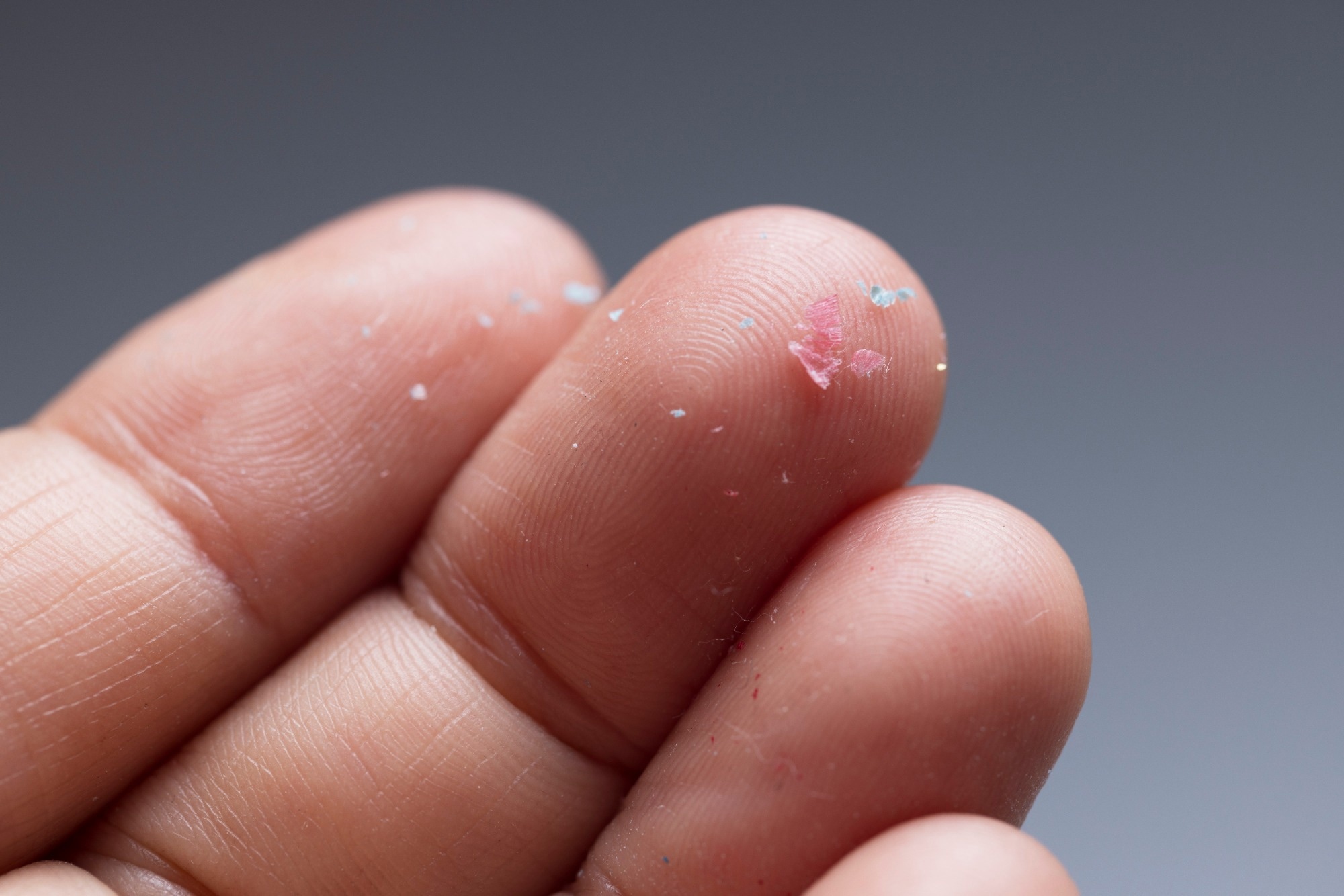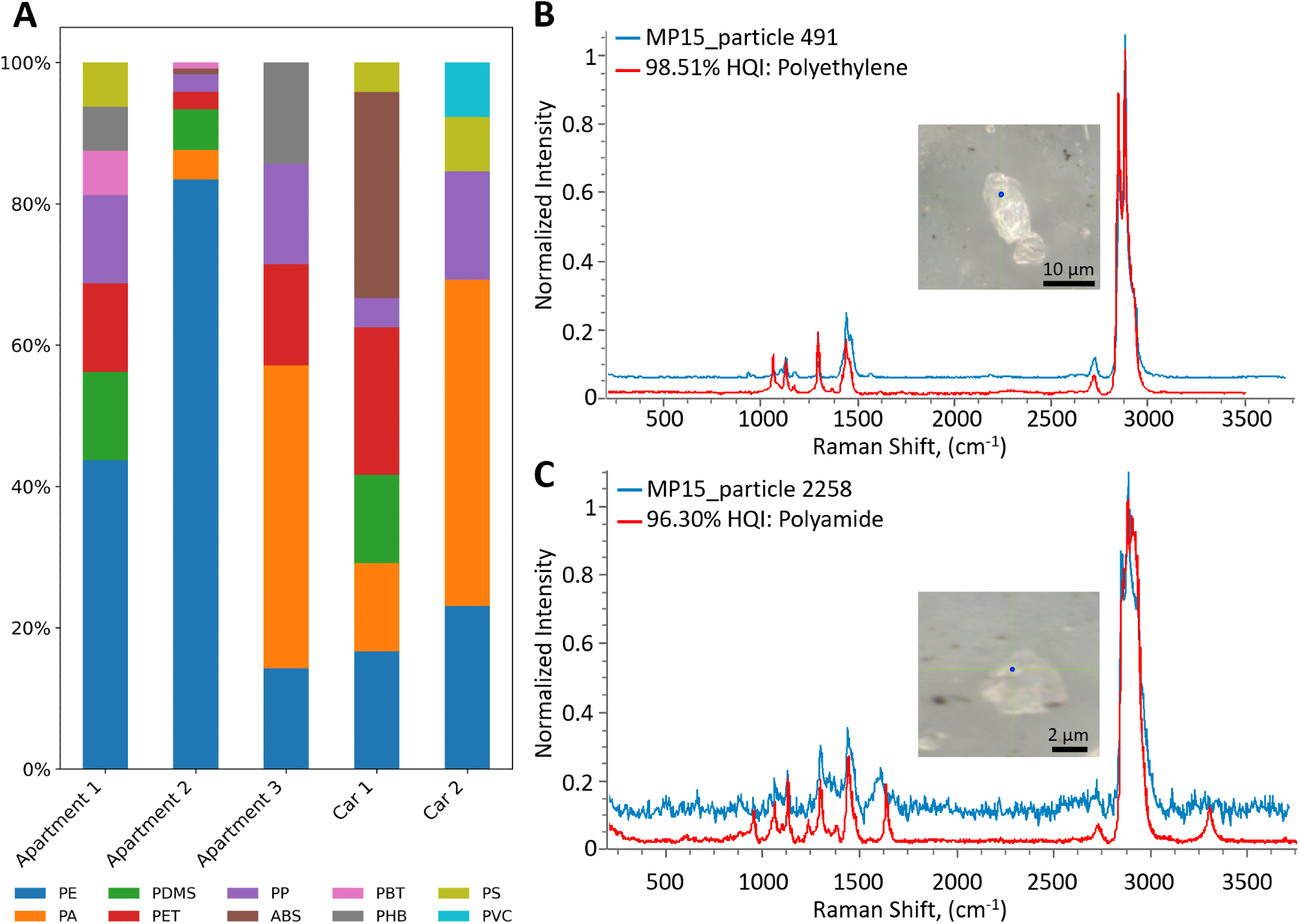A groundbreaking study reveals that invisible microplastics in homes and cars may be entering our lungs by the tens of thousands each day, underscoring a hidden risk of modern indoor life.
 Study: Human exposure to PM10 microplastics in indoor air. Image Credit: b.asia / Shutterstock
Study: Human exposure to PM10 microplastics in indoor air. Image Credit: b.asia / Shutterstock
In a recent article published in the journal PLOS One, researchers quantified airborne microplastics in indoor environments (car cabins and homes) to assess inhalation exposure.
The researchers found that indoor air contains significant concentrations of small microplastics, with car cabins showing median concentrations 2,238 MPs/m³, four times higher than homes (median 528 MPs/m³). However, this difference was not statistically significant (p=0.5) due to high variability. Estimated adult inhalation of microplastics in the 1–10 µm range is around 68,000 ±40,000 particles per day, while children may inhale 47,000 ±28,000 particles daily, highlighting a potentially underestimated health risk.
Background
Microplastics, plastic particles between 1 µm and 5 mm, have become widespread environmental pollutants due to extensive plastic use and poor waste management. These particles have been detected in outdoor and indoor air across diverse regions, from urban areas to remote locations.
Indoor air is of particular concern because its microplastic levels are approximately eight times higher than outdoors, and people typically spend 90% of their time indoors, including about 5% in cars. Microplastics vary in size and composition, which affects how they interact with the respiratory system.
Particles smaller than 10 µm (PM10), especially those under 2.5 µm (PM2.5), can reach deep into the lungs and potentially cause inflammation, chronic respiratory conditions, or systemic effects by carrying additives and adsorbed toxins.
Despite the known presence of microplastics in indoor air, research has mostly focused on particles larger than 10–20 µm due to limitations in μFTIR spectroscopy. These methods miss smaller, inhalable microplastics.
Raman spectroscopy (detection limit: 1 µm) allows accurate analysis of these smaller particles. In this study, researchers used Raman analysis to quantify microplastics between 1–10 µm in residential and car cabin settings and estimate human exposure.
About the Study
The study examined airborne microplastics in three apartments and two cars. Air samples were collected using vacuum pumps at human breathing heights (e.g., 1.6 m in living rooms, 0.5 m in bedrooms).
Twelve samples and four blanks were analyzed (January–May 2023). Lower-volume samples (<3 m³ air) underwent sonication in methanol; higher-volume samples (3–10 m³) included calcium chloride density separation to remove inorganic material.
Particles were transferred to filters and analyzed via automated Raman microscopy, with only 0.3% of each filter's surface examined directly (results extrapolated to full surface area).
Quality assurance included positive controls (81% recovery rate for 10–27 µm polyethylene beads), contamination controls (18% blank contribution), and strict cleaning protocols.
Microplastic concentrations were blank- and recovery-corrected. Inhalation exposure was estimated using EU-recommended breathing rates (adults: 16 m³/day; children: 11 m³/day).
 MP polymer composition in indoor environments. (A) Total suspended MP polymer composition observed in different indoor environments studied. (B) Raman spectrum of polyethylene (PE) particle (blue) and reference spectrum of PE (red). (C) Raman spectrum of polyamide (PA) particle (blue) and reference spectrum of PA (red).
MP polymer composition in indoor environments. (A) Total suspended MP polymer composition observed in different indoor environments studied. (B) Raman spectrum of polyethylene (PE) particle (blue) and reference spectrum of PE (red). (C) Raman spectrum of polyamide (PA) particle (blue) and reference spectrum of PA (red).
Key Findings
- Overall median indoor microplastic concentration: 1,877 MPs/m³
- Car cabins (median: 2,238 MPs/m³) exceeded homes (median: 528 MPs/m³), but variability was high (e.g., sample MP15 during high human activity: 34,404 MPs/m³)
- Polymer types differed: polyethylene dominated homes (76%); polyamide dominated cars (25%)
- 97% of microplastics were fragments (not fibers); 94% were inhalable (1–10 µm), following a power-law size distribution
- Adults may inhale 68,000 ±40,000 MPs/day (1–10 µm) and 3,200 ±2,900 MPs/day (10–300 µm), while children may inhale 47,000 ±28,000 MPs/day (1–10 µm). The larger particles contribute to gastrointestinal exposure via mucociliary clearance
- Consensus estimates (integrating prior studies) suggest higher indoor concentrations (4,300 MPs/m³ for 1–10 µm) than previously extrapolated from larger MPs
Conclusions
This study reveals that indoor airborne MPs <10 µm are more than 100 times more abundant than earlier estimates. Deep-lung penetration may raise concerns about systemic inflammation, oxidative stress, and endocrine disruption, though health implications require further study.
The first car cabin measurements underscore vehicle interiors as exposure hotspots. Raman spectroscopy’s ability to detect particles ≥1 µm is a key strength, though limited sample size (n=12) and extrapolated nanoplastic estimates require further validation.
The authors recommend routine Raman-based MP monitoring and inclusion of inhalation exposure in epidemiological studies.